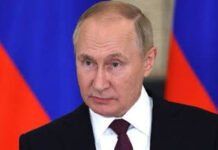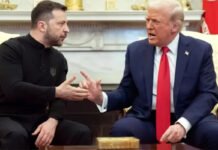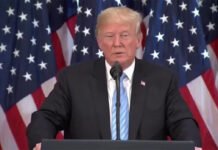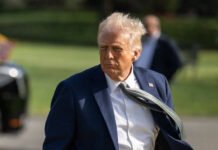The international trade landscape is witnessing renewed turbulence following US President Donald Trump’s recent announcement to impose a 25% tariff on all Indian imports, citing India’s ties with Russia and its protectionist trade practices. Just hours after this bombshell statement, Trump appeared to soften his stance, opening the door to negotiations. This sharp policy pivot has sent ripples through global markets and triggered intense speculation about the future of India-US economic relations.
Trump’s Initial Blow: 25% Tariff and Additional Penalty on India
In a bold move that stunned global analysts, President Trump declared that beginning August 1, the United States would impose a 25% duty on all products imported from India. His rationale? India’s consistent military and energy dealings with Russia, including the purchase of defense equipment and crude oil. “When the world wants Russia to stop killing in Ukraine, this is not right,” Trump said, directly linking India’s trade behavior to geopolitical tensions.
In addition to the tariff, Trump proposed an “additional penalty”, hinting at further punitive measures against India for what he views as non-cooperation in global sanctions against Russia. The shock factor of this announcement was compounded by its timing—just a day before the scheduled visit of a US trade delegation to India aimed at rekindling stalled trade talks.
Backtracking Begins: Trump Opens Door to Dialogue
Despite the tough rhetoric, the tone in Washington shifted quickly. In a response to ANI’s inquiry about negotiations, Trump remarked, “We are talking to them right now. We will see what happens.” He further added that India has historically maintained one of the highest tariffs in the world, positioning the fresh duty as a bargaining tool rather than an outright economic assault.
This abrupt change in stance hints at a calculated diplomatic maneuver—a common Trump tactic seen previously in trade engagements with the European Union, Japan, and the United Kingdom. By initiating pressure through trade penalties and then extending an olive branch for negotiations, the White House aims to leverage better deals in its favor.
India Responds: National Interest Above All
India has not remained silent. The Ministry of Commerce and Industry issued a formal statement emphasizing the nation’s sovereign right to pursue its economic and strategic interests. “We have been negotiating with the United States for a fair and balanced bilateral trade agreement,” a ministry spokesperson said. “India will take all necessary steps to safeguard national interests, especially those of our farmers, entrepreneurs, and MSMEs.”
India reiterated its commitment to fostering a mutually beneficial relationship, while clearly signaling that any agreement would need to protect domestic priorities. The statement also referenced India’s recent success in securing the Comprehensive Economic and Trade Agreement (CETA) with the United Kingdom, highlighting its diplomatic and negotiation capabilities.
The Russia Factor: A Thorn in US-India Trade Relations
At the heart of this escalation lies India’s strategic partnership with Russia, particularly in the defense and energy sectors. India is among the largest importers of Russian crude oil and has procured major defense systems like the S-400 missile system, defying direct warnings from Washington.
Trump’s frustration seems rooted in this bilateral alignment, especially as the Ukraine war drags on. The United States has actively sought global consensus in isolating Russia, and India’s neutral stance has caused unease in the White House. By connecting trade penalties with geopolitical choices, Washington is signaling that future economic cooperation will be influenced by India’s foreign policy alignments.
Trade Deficit Concerns: The Numbers Behind the Decision
President Trump has frequently criticized the growing US trade deficit with India. While India remains one of America’s key trade partners, the imbalance has been skewed in India’s favor, largely due to its high tariffs and non-monetary trade barriers.
Trump’s statement on social media clarified this stance:
“Our trade deficit with India has increased significantly. India is our friend, yet we’ve done relatively less trade with them recently because its tariffs are among the highest in the world.”
The proposed 25% tariff appears to be a strategic tool to rebalance this deficit and force India to open up sectors like agriculture, dairy, and e-commerce that remain tightly regulated.
Impact on Indian Economy: Sectors on High Alert
Should the 25% tariff come into effect without resolution, key Indian export sectors stand to suffer significant losses. Industries at the highest risk include:
Textiles and Garments
Pharmaceuticals
Automobile Components
Information Technology Services
Engineering Goods
With the US being India’s largest export destination, contributing over $75 billion annually, the stakes are high. The imposition of tariffs could lead to reduced competitiveness, layoffs, and disruptions in supply chains.
Geopolitical Tightrope: India’s Balancing Act
India is now faced with a complex balancing act. On one hand, it values its strategic autonomy and long-standing ties with Russia; on the other, it cannot afford a breakdown in relations with the United States, a crucial partner in defense cooperation, investment, and technology transfers.
The Indian government appears committed to diplomatic engagement, seeking a middle path that upholds national interests while maintaining dialogue with Washington. Experts believe New Delhi could leverage its status as a counterweight to China, reminding the US of India’s pivotal role in maintaining Indo-Pacific stability.
US Trade Delegation Visit: Hopes for De-escalation
Despite the turbulence, the upcoming visit of the US trade team to India scheduled for August 25 offers a potential breakthrough. Insiders suggest the visit will aim to de-escalate tensions and explore concessions from both sides. India is expected to demand relief on H-1B visa restrictions, while the US may push for greater access to Indian agriculture and digital markets.
Looking Ahead: A Defining Moment for Global Trade Politics
This episode marks a critical juncture in India-US relations. As the global order shifts amid wars, energy crises, and rising protectionism, both nations are recalibrating their strategies. While Trump’s tariff threat is deeply concerning, it may also serve as a catalyst for a new and more transparent trade framework between the two nations.
In the days ahead, we anticipate a high-stakes negotiation—not just about trade numbers, but about ideological alignments, national interests, and global leadership. The outcome could redefine the contours of economic diplomacy for years to come.
















